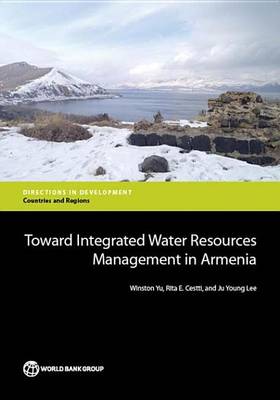Directions in Development
2 total works
The Indus Basin of Pakistan
by Winston Yu, Yi-Chen Yang, Andre Savitsky, Donald Alford, Casey Brown, and James Wescoat, Jr.
Published 15 May 2013
This book was undertaken at a pivotal time in the region. The weak summer monsoon in 2009 created drought conditions throughout Pakistan. This followed an already tenuous situation for many rural households faced with high fuel and fertilizer costs and the impacts of rising global food prices. Then catastrophic monsoon flooding in 2010 affected over 20 million people, devastating their housing, infrastructure, and crops. Damages from this single flood event were estimated at US$10 billion, half of which were losses in the agriculture sector. Notwithstanding the debate as to whether these observed extremes are evidence of climate change, an investigation is needed regarding the extent to which the country is resilient to these shocks. It is thus timely, if not critical, to focus on climate risks for water, agriculture, and food security in the Indus Basin in Pakistan.
This study uses several different modelling environments including hydrologic models, an agro-economic optimisation model of the irrigation system, and a computable general equilibrium model of the Pakistan economy. The models used here are among the best mathematical representations available of the physical and economic responses to these exogenous future climate risks. The integrated systems framework used in this analysis provides a broad and unique approach to estimating the hydrologic and crop impacts of climate change risks, the macro-economic and household-level responses and an effective method for assessing a variety of adaptation investments and policies. A better understanding of how these sectors are linked will help plan future investments in these sectors. Further collection and analysis of critical input and output observations (e.g. snow and ice data) as well as practical measures for improving productivity under a changing climate will enhance this integrated framework methodology and future climate impact assessments. Continued refinements to the assessment approach developed in this volume will further help to sharpen critical policies and interventions by the Pakistan government.
This study uses several different modelling environments including hydrologic models, an agro-economic optimisation model of the irrigation system, and a computable general equilibrium model of the Pakistan economy. The models used here are among the best mathematical representations available of the physical and economic responses to these exogenous future climate risks. The integrated systems framework used in this analysis provides a broad and unique approach to estimating the hydrologic and crop impacts of climate change risks, the macro-economic and household-level responses and an effective method for assessing a variety of adaptation investments and policies. A better understanding of how these sectors are linked will help plan future investments in these sectors. Further collection and analysis of critical input and output observations (e.g. snow and ice data) as well as practical measures for improving productivity under a changing climate will enhance this integrated framework methodology and future climate impact assessments. Continued refinements to the assessment approach developed in this volume will further help to sharpen critical policies and interventions by the Pakistan government.
Toward Integrated Water Resources Management in Armenia
by Winston Yu and Rita E Cestti
Published 30 September 2014
This study takes stock of the current water resources management in Armenia, including diagnosing the main sub-sectors (agriculture, urban, environment, and energy), reviewing the institutional framework and implementation status of water-sector policies, identifying the main challenges and making recommendations on the next steps.

